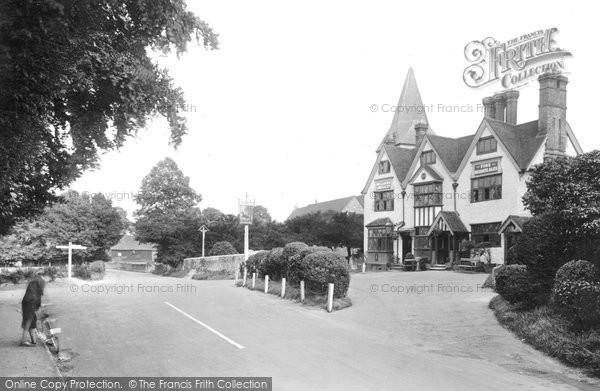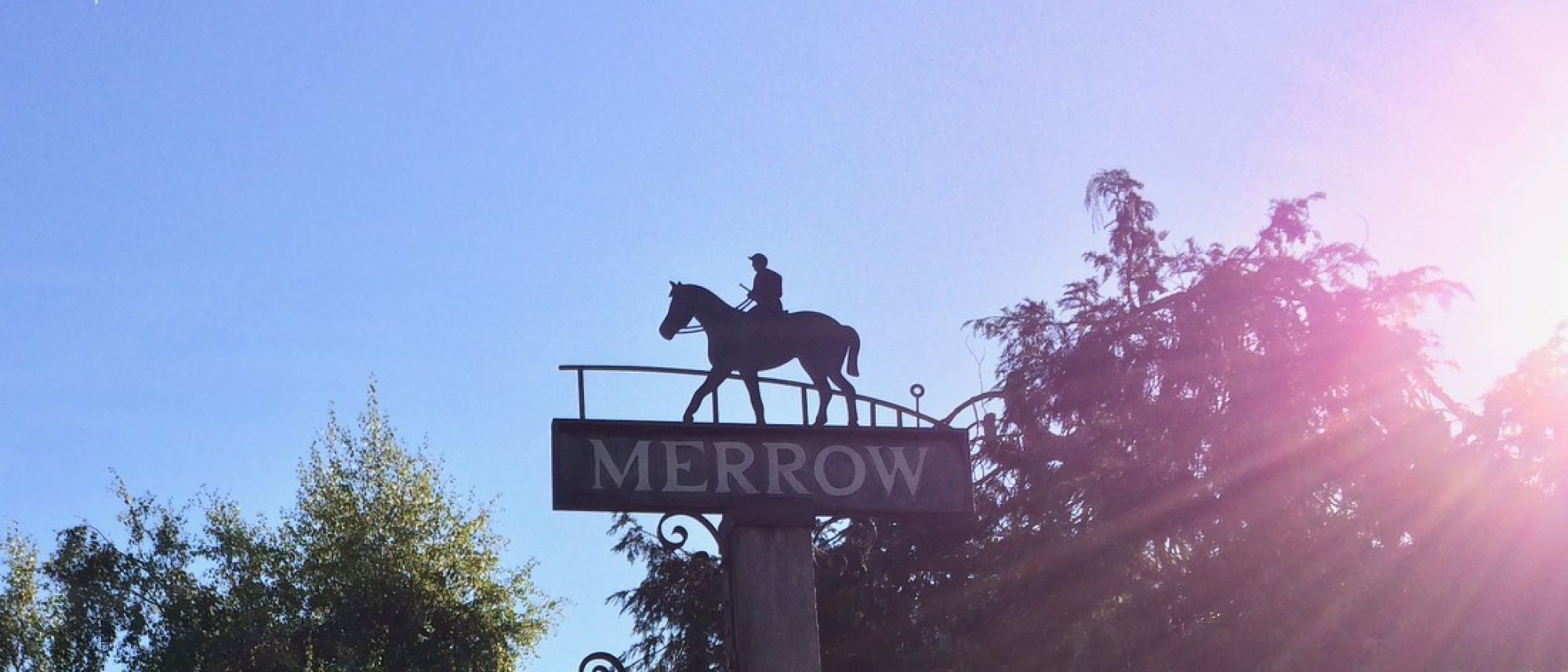Earlier this year Trodds lane was closed for several weeks in order that The Horse and Groom’s timber framed east wall with its decorative brick infilling could be repaired after severe death watch beetle damage had been found. Experts carried out the repairs which will hopefully ensure that the wall will last for another 400 years. Ian Anderson of the Merrow History Group has looked into the history of the pub for us.
Although The Horse and Groom’s displays a date of 1615 on its façade, its Grade 2 listing states that it probably dates from the mid-17th century and incorporates parts of an earlier building. The 1615 date may have been added during renovations in 1867 when the frontage, apart from the wall on the Trodds Lane side, was rendered.
It is believed that The Horse and Groom was originally a farmhouse, and although it has been remodelled since, it has retained its character and some of its old. panelling. One notable architectural feature is that the roof structure includes ‘staggered butt purlins, not in line’ The ground floor would have been divided into at least three rooms, with the farmhouse kitchen in the middle. The 25ft high newel post in the stair turret leading to the two upstairs stories is original.
Records show that by 1778 the inn was called The Hare and Hounds, which probably related to hunting and shooting which took place on Merrow Downs and the location of Lord Onslow’s hare warren nearby. From 1701 to 1870 Merow Downs were also home to one of England’s most famous racecourses which regularly attracted large crowds and by 1827 the inn’s name had been changed to The Running Horse. An article in 1827 recorded that “This was the place of rendezvous for all the running horses. Its stables bear interesting trophies of their temporary inmates in that the shoes of the winning horses were nailed to the doors, heel to heel, and the names of the horses and dates were carved within the ovals thus formed.” By 1873 it had been renamed as The Horse and Groom.
The surviving legal title deeds showing ownership of The Horse and Groom only date back to 1778, when the Onslow family sold the property for £252 to Benjamin Ward, vitualler (innkeeper/licensed purveyor of spirits), who was the sitting tenant and paid an annual rent of £6. Benjamin left his property to his four children by his will dated 1780. His daughter Mary was married to Thomas Gibbens and they bought out her siblings for £70 each. On Thomas’s death in 1813 it passed to their son Thomas, and on his death to his widow and daughter who put it up for sale. At that date it was in the occupation of William Wade. The purchasers, for £1000, were Mellersh and Neale,
It continued to be owned by the Ward family for several generations until it was sold for £1,000 to Reigate brewers Mellersh and Neale who carried out extensive repairs and renovations. Mellersh and Neale were acquired by Messrs. Meux in 1938 and Meux merged with Friary Holroyd and Healy in 1956 to form Friary-Meux. In 1969 they were acquired by Ind Coop who in 1961 had become part of Allied Breweries, later Allied- Lyons. Subsequently it operated for a while under the name of ‘Ember Inns’, a brand name of Mitchells and Butlers, before changing to ‘Mitchells and Butlers’..
The last tenants were the Nelsons, who gave up the tenancy around 1970, shortly after John’s death. Mrs. Nelson’s parents had held the tenancy previously. Thereafter a series of managers were put in. Major refurbishments and extensions took place in 1982 and 1988 and the modern extension west of the pub has been changed several times. In the front the eastern entrance has been removed and the wall rendered, although the exterior steps remain.
Through the years stories have been told about a tunnel under Trodds Lane linking the pub basement with St John’s Church that miscreants could use to access the safety of the hallowed church grounds. A grid still exists in the churchyard which covered the coal hole into the underground boiler room, so perhaps this fact was simply embellished over a pint or two to create the myth of a tunnel!


Reproduced courtesy of The Francis Frith Collection.
“Merrow, Hotel and St John’s Church 1927”
This history has been compiled largely from three sources:
- The building was grade 2 listed in 1953 and technical descriptions of the architectural features are given (See British Listed Buildings, Merrow).
- John Baker included the H&G in his series ‘The Seeing Eye’ for the Surrey Advertiser in 1975. He commented that ‘staggered butt purlins, in roofs were first recorded in Surrey at Walton Parish Church in 1640. This observation, and that in the Grade listing above, suggest that a build date nearer 1650 is probable.
- Mark Sturley, in his detailed book ‘The breweries and public houses of Guildford’ includes the best history of the H&G. His research included access to the Estate Departments of Messrs Courage, Friary Meux and Watneys breweries .
